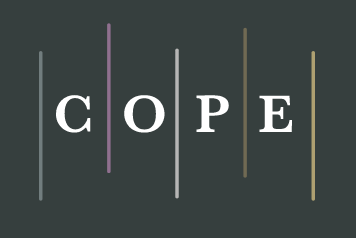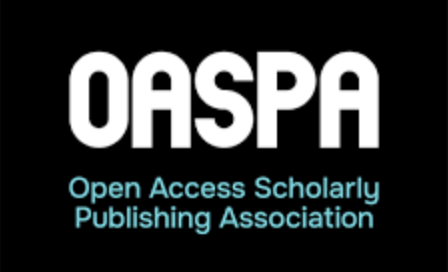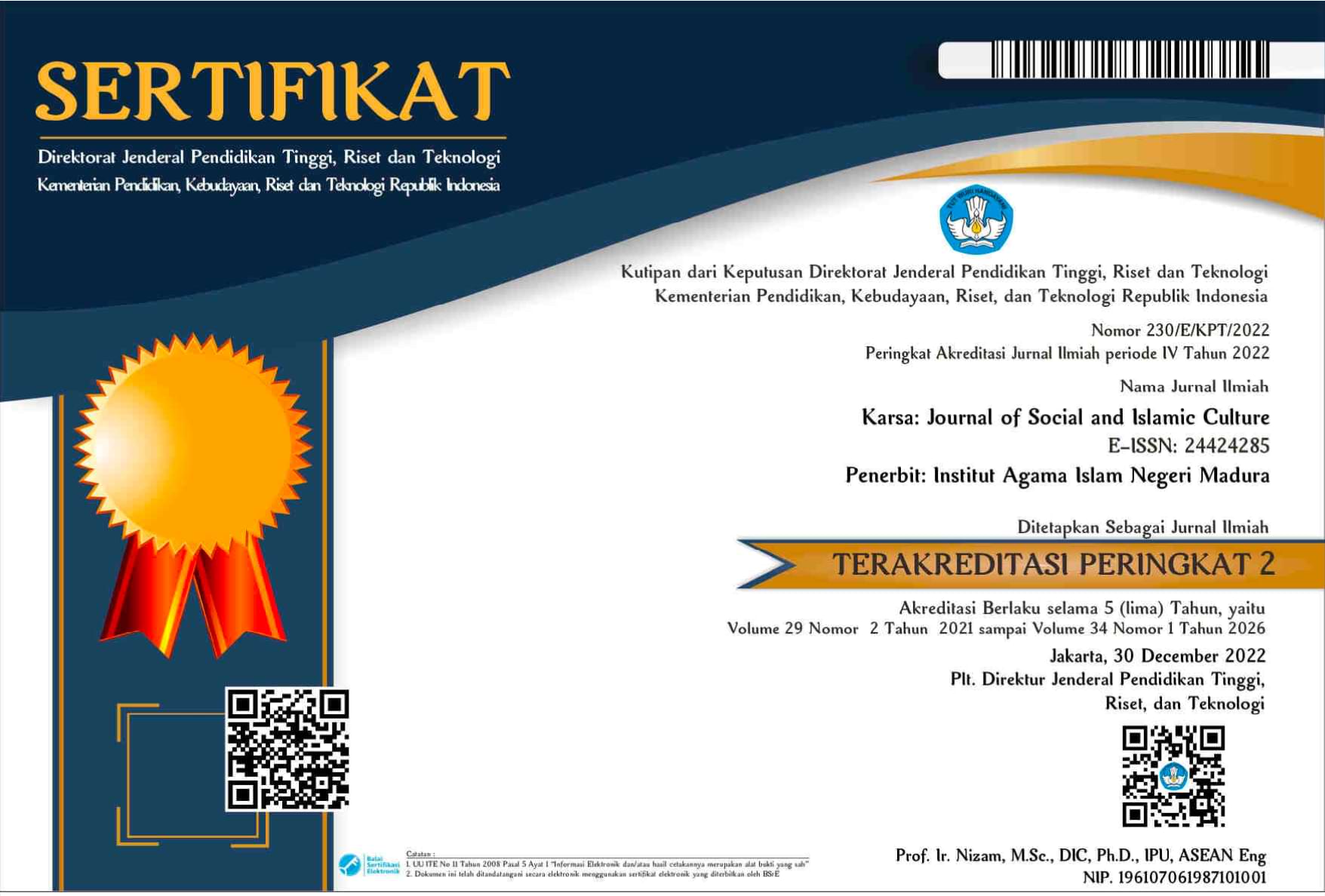Cultural Da’wah and Islamic Education Values in Antar Ajong Tradition of People in Melayu Sambas West Kalimantan
 Abstract views: 310
,
Abstract views: 310
,
 PDF downloads: 255
PDF downloads: 255
Abstract
This study describes the culture in the tradition of antar ajong in Sambas Regency and also the meaning contained in both cultural preaching and the value of Islamic education. This research is about traditional ritual ceremonies of antar ajong as traditional media in preaching and associating Islamic values. This study uses a qualitative approach. The research aims to describe the antar ajong tradition and the value of Islamic education in antar ajong tradition related to (a) its process of carrying out traditional rituals of antar ajong, (b) the purpose of the antar ajong tradition, (c) the function of the antar ajong ritual as a form of da'wah and as value of Islamic education. The traditional ceremony of antar ajong was carried out by the Malay community, Sambas Regency had a social role in order to establish relations with human beings, as well as to have a religious role, namely to establish human relations with the Almighty God. Through the tradition of antar ajong, as a cornerstone for religious development in the community also will be created, and closer to a lifestyle that is opt to Islamic guidance, besides antar ajong tradition contains Islamic values. Therefore, Muslim community in its association reveals positive behavior, because it is directed to always do something good, right through ethics and morals in society.
Downloads
References
Amir, Hazim. Nilai-Nilai Etis dalam Wayang. Jakarta: Pustaka Sinar Harapan, 1997.
Effendy, Chairil. Becerite dan Bedandek Tradisi Kesastraan Melayu Sambas. Pontianak: STAIN Pontianak Press, 2006.
Huki, Wila. Pengantar Sosiologi. Surabaya: Usaha Nasional, 1982.
Kartodirdjo, S. Lembaran Sedjarah Beberapa Masalah Teori dan Metodologi Sedjarah Indonesia.Yogyakarta: Seksi Penelitian Djurusan Sedjarah Fakultas Sastra dan Kebudayaan Universitas Gadjah Mada, 1970.
Kochhar, S.K. Pembelajaran Sejarah. Penerjemah Purwanta dan Yofita Hardiwati. Jakarta: Grasindo, 2008.
Koentjaraningrat. Manusia dan Kebudayaan di Indonesia. Jakarta: Penerbit Djambatan, 1999.
Miles, Matthew B. and A. Michael Huberman, Qualitative Data Analysis: A Source Book of New Methodes. C.A.Sage: Newbury Park, 1994.
Muhadjir, Noeng. Pemahaman Taksonomi Sebagai Dasar Penulisan Soal. Jakarta: Depdikbud, Dirjen Dikti, Proyek Pengembangan Lembaga Pendidikan Tenaga Kependidikan, 1984.
Pasaribu, Amir. Musik dan Selingkar Wilayahnja. Jakarta: Perpustakaan Perguruan Kem. P.P dan K., 1955.
Pasaribu, Ben M. “Taganing Batak Toba: Suatu Analisis Struktural dan Stratifikasi Sosial” dalam Nugraha, Sugeng (ed.). Seni Pertunjukan Indonesia. Surakarta: Masyarakat Seni Pertunjukan Indonesia, 1992.
Sardar, Ziauddin. The Future of Muslim Civilization. London: Croom Helm, 1979.
Satyananda, I. M. Upacara Tradisional Ngantar Jung. Pontianak: Departemen Pendidikan Kebudayaan Direktorat Jenderal Kebudayaan Direktorat Sejarah dan Nilai Tradisional Balai Kajian Sejarah dan Nilai Tradisional, 1996.
Setiadi, Elly M. Kama Abdul Hakam, Ridwan Effendi. Ilmu Sosial dan Budaya Dasar. Jakarta: Kencana Prenada Media Group, 2013.
Sulaeman, M Munandar. Ilmu Budaya Dasar Suatu Pengantar, Bandung: PT Eresco, 1998.
Syam, Muhammad Noor. Filsafat Pendidikan dan Dasar Filsafat Pendidikan Pancasila. Surabaya: Usaha Nasional, 1986.
Tim Depdikbud RI. Kamus Besar Bahasa Indonesia. Jakarta: Balai Pustaka, 1989.
Tim Penyusun, Pedoman Penulisan Sejarah Lokal. Jakarta: ASDEP Urusan Sejarah Nasional Deputi Bidang Sejarah dan Purbakala Kementerian Kebudayaan dan Pariwisata. DRAF, 2005.
Tim Penyusun. Adat Istiadat Melayu Sambas. Sambas: Pemerintah Kabupaten Sambas, 2004.
Wartoyo, F.X. Pengantar Sejarah Lokal. Surakarta: Cakrawala Media, 2012.
The journal operates an Open Access policy under a Creative Commons Non-Commercial Share-Alike license. Authors who publish with this journal agree to the following terms:
- Authors retain copyright and grant the journal right of first publication with the work simultaneously licensed under a Creative Commons Attribution License that allows others to share the work with an acknowledgement of the work's authorship and initial publication in this journal.
- Authors are able to enter into separate, additional contractual arrangements for the non-exclusive distribution of the journal's published version of the work (e.g., post it to an institutional repository or publish it in a book), with an acknowledgement of its initial publication in this journal.
- Authors are permitted and encouraged to post their work online (e.g., in institutional repositories or on their website) prior to and during the submission process, as it can lead to productive exchanges, as well as earlier and greater citation of published work.




















